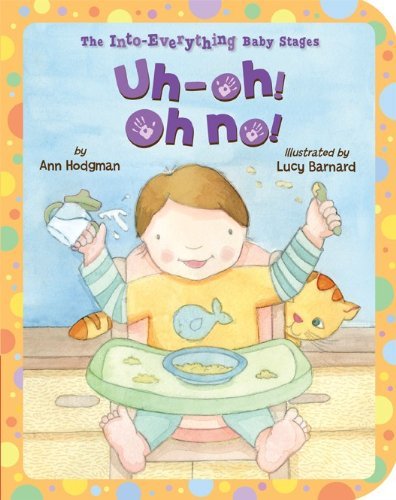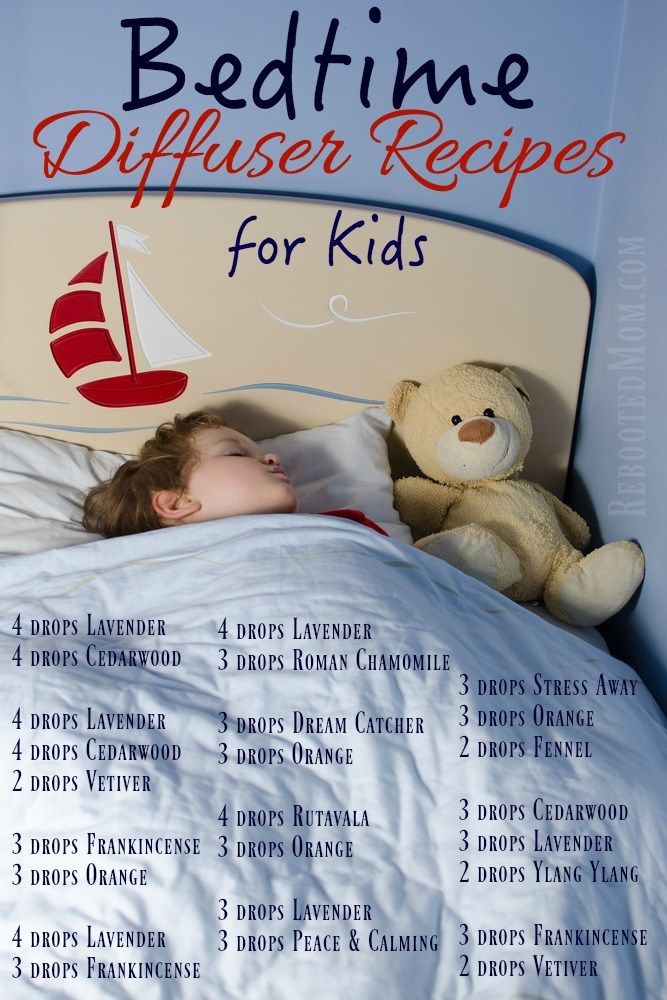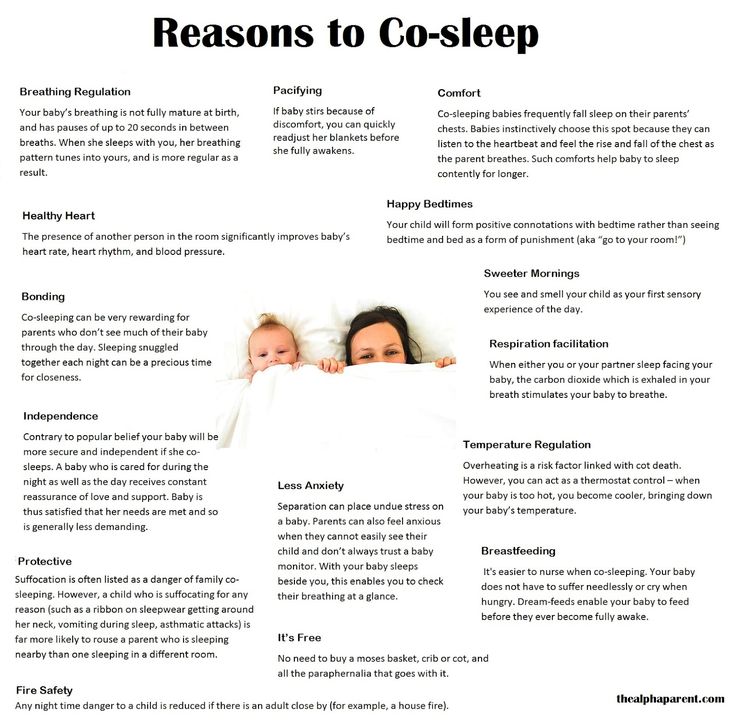When do babies drop dream feed
When, What, & How to Dream Feed the Right Way!
If you haven’t heard of a dream feed before, you may be asking yourself “what is a dream feed” exactly?!
This term was coined by The Baby Whisperer to describe a feeding you perform in the late evening hours while your baby is asleep. You simply rouse them gently enough that they take in a feeding before you go to bed, in order to improve their night sleep.
Babies will instinctually take in what they need during that feeding (either by breast or bottle).
If you have been wondering if a dream feeding is the answer to your infant’s night wakings, then this blog will cover all the information you need to try it out!
Some frequently asked questions we will cover are:
- How to dream feed
- What ages to dream feed (dream feed baby, dream feed newborn)
- When to stop dream feed
- Is dream feeding safe?
- Dream feed schedule
- Do you burp during a dream feed? (or wind after a dream feed)
- How much do you feed during a dream feed?
- Dream feed pros and cons
- How to wake a baby for the dream feed
- How to drop the dream feed
Why would a dream feed work (or what is the theory behind it)? If your baby typically does a bedtime feeding around 7pm, then they may wake at 11pm, 12am, 1am to eat again. That means you may have only been asleep for an hour or 2 yourself!
By giving a feeding in the 10pm (or so) hour, you eliminate the waking out of true hunger and may allow baby to sleep longer (and you too)! In other words, it resets their feeding clock back to zero.
This essentially elongates the baby’s long stretch of sleep to align with parents so they are getting more sleep.
We are filling their tummy up before they have the chance to get hungry and wake you up in the middle of the night.
A dream feed can also be useful to temporarily implement when you begin sleep training. This way baby does not associate waking and crying with being fed. You can feed while they are asleep and comfort/soothe when they are awake.
Some may even consider this a tear-free way to night wean a little one.
Another way the term “dream feed” is used, is by bedsharing+breastfeeding moms. Most of the time a baby will only rouse a little bit, nurse, and fall back to sleep without waking and crying. Essentially they are eating in their sleep or very light sleep cycles.
Essentially they are eating in their sleep or very light sleep cycles.
You may find that the idea of the dream feed is more well known and popular than the actual results of the dream feed. It may be the equivalent of an Urban Myth. Read on to find out why!
How to Dream Feed?Ideally, we want the baby to stay asleep or doze during the dream feeding. Follow these steps to dream feed your little one:
- Step one: Gently rouse your little one just enough that they latch onto the bottle or breast. They need to alert enough to eat, but not so much that they wake up and are cranky. That could throw off the whole night!Some babies are roused enough just by taking them out of their sleeping space, others may need a little more!Pro tip: The best way to rouse them is to initiate the rooting reflex by stroking their cheek.
- Step two: Feed the baby! Simple, right? Make sure their head is slightly elevated. If you’re having trouble getting them to latch, then they are not awake enough.

- Do not give up! It may not work the first few times. Try to give it a consistent effort for a week before deciding if it works for your family.
It is important to note that there is very little (or none) evidence based research to prove whether a dream feed is effective or not. It is mostly anecdotal information.
What ages to dream feed (dream feed baby, dream feed newborn)?There is a wide variance on what ages to dream feed. You can start a dream feed for your baby at any time or dream feed newborn.
Imagine you have a little one who is really fussy in the late evening hours. It's probably because of the witching hour baby time period. It's important to know what age does the witching hour stop and how to handle it. Parents often preemptively feed them during that phase and avoid having another lengthy waking from a fussy baby.
You can definitely introduce this concept at any age, however as a professional, I find it works best (if it is going to work) prior to 3-4 months of age when they already have multiple night feedings.
It typically works best to try to wean the dream feeding before 6-9 months of age. After that, it can disrupt sleep even more than it helps.
Babies tend to become a lot more alert by that age and will fully wake up, wanting to play when you are trying to sneak in that extra feeding!
If you find that your little one is having a difficult time settling after you have done the dream feed, then that is usually a sign to stop the dream feed.
It is important to remember that this is a short term solution to night wakings and will eventually become a habit.
Some pediatricians will agree that babies do not need feedings in the night after 6 months of age, but every baby is different. so it's important to know when do babies sleep through the night
Since a dream feed is typically done to get a little one sleeping through the night, it is definitely best to check in with your pediatrician!
Is dream feeding safe?Dream feeding is totally safe, when you feed just like you would during the day! It is not safe if you prop a bottle or feed the baby while they are lying flat as this is a choking hazard.
You also want to make sure you are alert while feeding your little one so that you do not risk falling asleep holding them while on an unsafe surface (like a recliner) or dropping them should you doze off.
To read more about safe sleep, check out this blog!
Dream Feed ScheduleA dream feeding schedule would look something like:
- 6 or 7pm bedtime feeding
- 10 or 11pm dream feeding
- 3, 4, 5am night feeding (and this waking gets later and later as baby grows, develops their long stretch of sleep, and eventually sleeps through until their normal morning wake up!)
- Without the dream feeding, it may look something like:
- 6 or 7pm bedtime feeding
- 12am night feeding
- 4am night feeding
Which means you are waking twice, instead of just once further fragmenting your night sleep as well as theirs.
Do you burp after a dream feeding? (or wind after a dream feeding?)Absolutely! Burping is typically easier during the night when they are more relaxed. You will want to do this to avoid any discomfort waking your baby soon after you put them down.
You will want to do this to avoid any discomfort waking your baby soon after you put them down.
This can also help to avoid them spitting up after the dream feeding. It is helpful to hold them upright for 10 or so minutes after the feeding to allow them time to digest, get the air out and relax back into a deeper sleep when you put them back down.
Some babies naturally take in less air during the dream feed because they are more relaxed. In this case, they may not burp but you should still try to get one out.
How much do you feed during a dream feeding?There is no right or wrong answer to this one; you can do a small “snack” feeding of 2-3oz, you could do their normal 4-6oz, you could feed on one side if breastfeeding, or feed on both sides!
Some babies will only drink a tiny amount, some will take in the full feeding.
You know your baby best, so you can experiment and see what works!
Dream Feed Pros and ConsPros for the dream feeding:
- Extends their night sleep (and yours!)
- Babies sleep through with less disrupted sleep
- Their sleep is more aligned with yours
- May help a breastfeeding mom’s supply (or you could pump before you go to bed if you would rather and the dream feeding is not working!)
- It can lessen the amount of time your baby cries by anticipating their need for food
- Anticipates their need for food and takes the guesswork out of night wakings
- Sleepy babies are cranky babies, so by ensuring baby wakes less frequently at night, baby may be less cranky during the day
- For moms, knowing they may get a few extra hours of sleep instead of going to bed wondering when the next waking may be, will actually improve their sleep (even if it doesn’t actually work- kind of like a placebo effect)
- May help baby avoid any pain associated with reflux after a feeding
- If your little one is struggling with intake during the day, the night feed can get the extra calories in that they might have missed
Cons for the dream feeding:
- You may have to stay up later to get it in
- May not always work unfortunately (this means they may not sleep longer after it, or may wake more frequently because of it)
- May disrupt their sleep (they may not go back to sleep easily after eating at that time)
- Disrupts baby’s natural sleep cycle (and interrupts their most restorative sleep they will get during the night)
- Can be difficult to drop it (it becomes habitual when we condition them to eating at that time)
- Some will say this goes against “feeding on demand” and is forcing a meal on your little one they may not already want/need
- It reinforces that food equals sleep, enforcing the brain and tummy connection.
 It just blows past feeding cues from our little ones
It just blows past feeding cues from our little ones - It can overfill a baby’s tummy and cause sleep disruption plus gastrointestinal discomfort
- According to care.com, “When baby becomes dependent on dream feeding, no learning is taking place, and it's possible that he'll lose his ability to suck purposely, says Potock. "My recommendation is to keep a balance between dream feeding and conscious suckling. That way, baby is soothed and comforted and may even fall asleep at the breast or toward the end of a bottle, but is still learning to suck-swallow-breathe with intention over time."
If your baby is having a hard time waking (just enough) to eat, then you can try a few different things:
You can try at a different time of the night. If your baby is in a deep sleep cycle, then you can wait until you see them in a light sleep cycle to feed; they may be easier to rouse at that point!
You can unswaddle them from the bottom and change their diaper (or use a Kyte BABY sleep bag which has a zipper at the bottom to make night time changes easier).
Rub a wet cloth or wet wipe on their cheek.
Tickle the bottom of their feet (annoying them just enough to get them to latch onto the bottle or breast).
Try changing the position you are holding baby in (switch sides for example).
Express some milk from the bottle or breast onto their lips; this may entice them to open their mouth enough to eat!
Pro tip: if you need light, use something soft, like a salt lamp. A salt lamp will not interrupt melatonin production which means you can go to sleep much easier after doing the dream feed.
“The great thing about babies is that they have a natural instinct to suck if they’re at a nipple,” says Jason Freedman, co-author of the book The Dream Feed Method.
Remember, this is a great way for dad to help out! If you are formula feeding, you can take shifts and dad can give the dream feed so that mom can get in a nice long stretch of sleep in the beginning of the night.
If you are breastfeeding, you could consider introducing a bottle, pumping some milk before you go to bed and allowing dad to give the bottle for the dream feeding-- again, giving mom a great long stretch of sleep!
For newly postpartum moms, sleep is so important! If you feel like you could be suffering from postpartum depression or anxiety, then use this list from the National Sleep Foundation to check in with yourself and see if the dream feed helps you rest better!
How to drop the dream feed?
You will wait to drop the dream feeding until your baby is able to sleep from the dream feed to their normal morning wake up time, through any other night feedings.
You may choose to keep the dream feeding at that point, or you may want to wean it.
Once they are sleeping from the dream feeding to the morning wake up and have dropped any night feedings or early morning feedings, you will try to wait about 2 weeks before dropping the dream feed.
When you are ready to drop the feeding, you have a lot of options!
- You could wean the amount of ounces you are feeding if you are bottle feeding (by ½ an ounce every second or third night; more if you are in a hurry)
- You could wean the amount of time you are feeding if you are breastfeeding (so you would want to take note of how long the dream feed takes and then you can cut it by 1-2 minutes every second or third night)
- You could also drop the feeding cold turkey and utilize baby sleep training method to address any night wakings
The dream feed method book suggests dream feeding a newborn at 1 and 4am (give or take), and gradually moving those feedings earlier until you are down to one feeding and moving that one earlier until you no longer need it.
They also boast this will get your baby sleeping through the night by 4 months. As a professional, I believe this is a little bit ambitious, but if it helps families get more sleep (even if it does not mean sleeping through the night completely without feedings) then I am all for it!
As always, address this with your healthcare provider as they are able to assess your child’s growth and overall health!
It will also be easier to drop the dream feed if your child is already an independent sleeper at bedtime! Otherwise, when they wake up, they will need assistance getting back to sleep even if you are not feeding them.
Another important factor when working to drop a dream feed is to make sure you have a great day time routine.
This is important because:
- This ensures they are getting an appropriate amount of sleep (so they are not waking because they are over or undertired at night)
- Their nutritional needs are met (getting in nice, full feedings during the day and they are not skipping feeds)
- Sets up their circadian rhythm/biological clock
- Meeting their needs before they meltdown
A helpful practice to put into place is to offer soothing at every waking as opposed to feeding at every waking. You can implement a sleep training method (like pick up put down) or offer a pacifier and see if that soothes them back to sleep.
You can implement a sleep training method (like pick up put down) or offer a pacifier and see if that soothes them back to sleep.
Typically, you cannot soothe a hungry baby without a feeding! (No, this is not always the case so again, check in with your health care provider.)
It is also helpful to practice “le pause” for any wakings. If you are not familiar with “le pause”, you can read more about it here. Essentially, you stop, wait, and listen to what your child sounds like when they wake up.
If it is pretty mild fussing, grunting, etc and not full out crying, then you may be comfortable practicing that pause in order to let your little one settle back into their next sleep cycle.
If they are truly upset and need intervention, then you can step in for reassurance!
The worst case scenario with dropping the dream feed is that they continue to wake for it. In that case, you may choose to add it back in for a short period of time and try again later.
Pro tip: while introducing a dream feed, consider sizing up in diapers, using night time diapers, or inserting diaper booster pads as the extra intake may cause them to leak out of their diaper.
Forget all the “rules.” There are no hard and fast rules. You can try it at 9pm, 10pm, 11pm.
You can swaddle or unswaddle. You can change their diaper or leave them as undisturbed as possible.
Do not panic if they wake up. Just keep the interactions low, lights down, and make it a relaxing feeding for you both.
Try not to stress if you attempt the dream feed and it does not work! It may not work right away and it is up to you if you would like to continue trying it, or let your baby lead the way with night feedings.
Either way is perfectly fine. Find what works for you and your baby! Do not get frustrated if it doesn’t work for your little one. There are a lot of other options out there to get you both better sleep!
We all know that new babies come with a certain level of sleep deprivation, and a dream feed can be one way to combat that.
There haven’t been any proper randomised, controlled studies into dream feeding so most of the pros and cons are based on anecdotal evidence and people’s opinions.
It definitely does not hurt to try it!
Best case, it buys you some extra hours of sleep and worse case, you wake at your normal feeding times.
Author Bio: Ashley Olson is a certified pediatric sleep consultant, owner of Heaven Sent Sleep, and passionate about helping new parents, experienced parents, desperate and sleep-deprived parents form healthy sleep habits for their children.
She has over 3 years of experience in working with families and has completed over 150 hours of coursework plus continuing education related to infant and toddler sleep. The focus of her work is on fostering a routine that grows your bond with your child while improving their sleep habits. She specializes in custom sleep plans and one on one support in changing sleep practices!
The Why, The How, & When To Stop
What's in this post...
Wondering how to do a dream feed? This post will tell you exactly when to do dreamfeeds, how to make sure baby stays awake, and when to wean them.
Oh these little squishy babies…
I remember the first time I heard about a dream feed with my firstborn.
What is it?
Why do you do it?
Who came up with these names for things?
Why, oh why do a dream feed?I read around and then tried to implement it with my baby girl. It took a while, but eventually we got the hang of it and Oh My Goodness… game changer.
Now, as a certified baby and toddler sleep consultant… it’s a go to sleep and feed strategy.
If you don’t currently do the dream feed then this post will help you for a few reasons.
And if you’re serious about making a few nightly changes, I suggest using a baby log to help clear our head and get it on paper.
Read: 7 Simple Reasons Why Your Baby Won’t Nap & What To Do
What is a dream feed, anyway?
A dream feed is a feeding you do in the late evening hours before you go to bed. You’ll usually have to rouse baby for this feed.

Or rather, baby will be sound asleep typically and you will feed baby while they’re still mostly asleep. Hence the name: dream feed.
I’ll get into the details… keep reading.
Read: End Your Baby’s Fussy Evening Hours (Witching Hours) In A Few Steps
Why do you do it?
First, let’s tackle why we want to do a dream feed in the first place. Here are the two main reasons dream feeds are a good idea.
Necessary? Of course not! Helpful? Absolutely!
- You get a longer stretch of sleep each night | By feeding baby in the later evening, before midnight, you’ll hopefully get yourself a longer stretch of sleep. Sleep is very important to moms for sanity (lack of sleep is literally like torture), healing, and to help you get back to your normal self in the postpartum fog.
- Baby will eventually sleep from after the feed then sleep until your desired wake time | It’s hard for a baby to sleep from 7 pm to 7 am.
 When baby is old enough, adding in a dream feed can get baby to sleep from the dream feed until your desired wake time.
When baby is old enough, adding in a dream feed can get baby to sleep from the dream feed until your desired wake time.
Read: Baby Bedtime — 4 Essential Elements To All Evening Routines
The Why, The How, & When To Stop This Feed
So let’s dive into it. By the end of this post I hope you’ll have all you need to know about the dream feed and why its so useful.
Read: Simple Baby Advice That Stands The Test Of Time
When to offer this feed
Ideally, you want to dream feed right before you go to sleep, but usually no later than 11:30 or else it is simply a night feed.
Somewhat, the time you feed depends on what time you go to bed.
You want to feed baby right before you go down to sleep. So if you go to bed around 10:00 then feed baby at that time, then lie down to sleep.
Feed baby while keeping him swaddled (how to do that here) and not fully rousing him, then baby will sort of feed in his sleep and “top up” his tummy.
Doing a dream feed between 10:00 and 11:30 is usually a safe bet, but any later than that becomes a night feed.
Read: The Ultimate Sleep Schedule For Newborns For The First 6 Weeks
This convertible swaddle will allow you to keep baby’s arms swaddled while you zip up and change diaper at night.How To Feed When Baby Is Drowsy
Those first early hours after you’ve put baby to bed are often baby’s deepest sleep. The sleep from bedtime to midnight is the deepest most restorative sleep, so babies are usually conked out at this time.
This means it can be tricky to rouse baby enough to get them to feed.
That’s okay.
We don’t want to force it when it isn’t working.
However, often you’ll be able to rouse baby enough to take a feed, even half a feed, and this can help them sleep longer at night.
For those first few weeks, there’s really no need for this feed.
Try these things to wake baby up a bit
When baby is drowsy, here are some ways to rouse him enough to give him the feed.
- Unswaddle from the bottom to change his diaper.
- Rub a wet wipe or cloth across his cheek.
- Tickle the bottom of his feet or cheek.
- Put some milk on his lips.
If these don’t work, then put baby gently back down. Then, if you’re still up half an hour later then you can try again briefly. If it still doesn’t work, go to bed.
Keep trying nightly until baby is used to taking this feed. This helps push the next feed off until later after midnight and gives you a few uninterrupted hours of sleep which is good for mama.
Read: Want A Content & Happy Little One? Use The Foolproof Baby Schedule
Here’s a video that may help
Watch my video on an important cluster feeding issue (the feeds in the early evening before the dreamfeed).
Cluster Feeding CHECKLIST
Use our checklist to use cluster feeding to your advantage without feeding every hour all day every day!
Does It Always Work?
Now, I’m a big believer in the dream feed. I know – having had 5 babies – it’s the reason they routinely slept until at least 7 a.m., if not on closer to 8, even as tiny babies.
I know – having had 5 babies – it’s the reason they routinely slept until at least 7 a.m., if not on closer to 8, even as tiny babies.
They were given milk at the dream feed which enabled them to sleep later in the morning.
Next – when they were ready – I dropped the dream feed and they slept all night!
That said, sometimes they can be a bit tricky. When you wake your baby for a dream feed at 11:00 pm and baby wakes at 12:30 am for another feed, mom might be resistant to that.
If you find a dream feed wakes your baby up right after midnight, drop it and see what happens.
It might work out better for baby to simply go to bed at night, sleep a long stretch, and then wake up for that 12:30 am feed. This will mean baby sleeps a long restorative stretch.
You can, with time, add in that dream feed if you want them to sleep later.
Often babies will start sleeping through the night but waking up at 4:30 or 5:00 am and not want to go back down. This is why the dream feed is so helpful. They will feed at 10:30 pm or so and then sleep until 6:30 or 7:00 am instead.
This is why the dream feed is so helpful. They will feed at 10:30 pm or so and then sleep until 6:30 or 7:00 am instead.
Unless you need baby up that early to leave the house, it’s a more pleasant proposition for baby to sleep later.
Read: A Quick & Easy Way To Survive The 4 Month Regression
When to wean the dream feed – this is important!
Let’s reiterate here that if you only have one feeding per night, it’s very helpful if it’s a dream feed. It should – theoretically – be the last feed you drop.
Here’s the reasoning…
By having a dream feed you are helping baby sleep longer stretches between night feedings. Baby may need a 3:00 am feed and a 5:30 am feed then sleep on until 7 or so.
You’ll eventually drop that 3 am feed and focus on the 5:30 am one. After a while, you’ll work to drop that 5:30 am feed so they are sleeping later in the morning.
Then, they are going from the dream feed all the way until the morning time.
Sleep Little Lamb
Create sustainable sleep habits for your little lamb so the whole family can sleep peacefully without the stress, drama, and tears.
Learn More
How do babies end up sleeping all the way through until morning?
This feed!
If you haven’t had a dream feed and baby is under 5 months but not yet sleeping through the night, try adding it in.
See if it helps baby sleep later. I always kept the dream feed even though I dropped all the others because that extra time in the morning meant a lot to me.
Read: 7 Month Feeding Times That Work Like A Charm
28 Things To Do If Baby Won’t Sleep CHECKLIST
Here’s a handy dandy list of 28 things to try so baby will stop fighting sleep and sleep longer and later.
FAQ on dreamfeeds
When do you stop dream feeding?
The dream feed is the last feed that you drop. You usually drop the dream feed when baby sleeps from bedtime until their morning wake time with only the dream feed. This should be dropped by 6 months.
You usually drop the dream feed when baby sleeps from bedtime until their morning wake time with only the dream feed. This should be dropped by 6 months.
What if a dream feed doesn’t work?
After 6 months dream feeds can trigger more wakings. By 6 months if baby is doing a feed at 10:30 p.m. then waking again at 1 a.m., it could be that the dream feed isn’t working anymore.
Is the dream feed a full feed?
Yes, try and give baby a full feed which should last them a few hours before the next waking.
Should I introduce the dream feed?
If you have a newborn who wakes frequently, introducing the dream feed may get you a longer stretch of sleep. Try it out for a few days if it triggers more after midnight wakings, just drop it.
Do you burp after a dream feed?
If you can easily burp baby without waking him, yes. If not, rub baby’s back on the left side (stomach side) and up the back to get out any air bubbles and simply put baby back down to bed.
If not, rub baby’s back on the left side (stomach side) and up the back to get out any air bubbles and simply put baby back down to bed.
Should I keep baby upright after a dream feed?
Dream feeds should happen while baby is sleeping. If baby will wake up if you put him upright, don’t do it. You can feed enough to satisfy baby and get a good long stretch of sleep without going through great lengths to burp.
Do you change baby’s diaper at the dream feed?
Unless baby is leaking, changing the diaper isn’t needed. If baby isn’t unhappy, don’t wake them to change a diaper. If you feel you need to, however, change the diaper before feeding so baby will remain asleep for the feed then be put straight back to bed.
Can I dream feed at 9pm?
The best time to do a dream feed is between 10 and 11. Much after that is a night feed and much before that is just a regular evening feed.
Sources:
- The importance of schedules and routines
- Benefits of bedtime routine
- Consistent nature of sleep times related to cognitive development
Family Routines Reboot
Take our 3 day challenge to create life-giving family, child, and self-care routines.
Learn More
Daytime sleep: how, how much, when?
03/10/2016
188
The human body is a truly amazing thing: everything in it is interconnected and nothing in it happens “just like that”. There are many important roles for baby naps that moms need to be aware of in order to make their baby's rest a priority when organizing a day's schedule.
During the first morning sleep, children learn actively - they memorize new skills, words, phenomena, and after such a dream they show much better results in reproducing what they were taught before going to bed. This fact is described in many studies of children's sleep and that is why it is important to provide children with morning sleep for as long as possible - so they literally become smarter! Babies in the first year and a half absorb such a flow of information that we simply have to give them the opportunity to get the most out of it and adequate sleep here, it is much more useful than going to a developmental circle (or better if they were both: first a circle, then a dream).
Lunch naps allow babies to grow and develop physically. During this period (and only in a dream!) Growth hormone is released, which not only helps the baby grow taller and bigger, but also actively participates in the processes of tissue regeneration. Remember how a baby gets sleepy when it's sick? One of the reasons is the need to increase the production of just this hormone and, thus, help the baby recover faster.
Daytime sleep management
Daytime sleep is a fragile and very dependent process, especially if you are just starting to work on good sleep habits. To help your baby fall asleep faster and sleep longer, it's important that you put him to bed in the darkest setting possible (as close to night as possible). No, the baby will not learn to sleep in the dark during the day - this is a physiological need, remember yourself - where do you feel more comfortable sleeping during the day: in a darkened room or in the bright light of day?
The background sound in the sleeping room should be even. No need to strive for silence - any sudden burst of sound will sound much brighter in it (a phone call, children on the site under the window, an ambulance siren on the highway). Ideally you can use white noise.
No need to strive for silence - any sudden burst of sound will sound much brighter in it (a phone call, children on the site under the window, an ambulance siren on the highway). Ideally you can use white noise.
Physiology of daytime sleep
Daytime sleep is controlled by a different part of the brain than nighttime, and serves to a greater extent for the emotional recovery of the baby. Daytime dreams are finally formed and mature much later than at night. Therefore, in an infant up to 4 months (from PDR), you can see a rather chaotic sleep duration - both 20 minutes and 2 hours. This is normal and in most cases does not require intervention. The main thing is that a certain balance is maintained and, as a result, the baby sleeps approximately equally long and short dreams during the day.
The duration of one sleep cycle is shorter in children than in adults. Our cycle lasts from 90 to 120 minutes, and for babies from 30 to 50. When the cycle ends, any person wakes up - and if he knows how to fall asleep on his own, he immediately falls asleep again (and by morning there is not even a memory of this) . Toddlers who can't fall asleep after 40 minutes always depend on your help to fall asleep initially, which means they won't be able to fall asleep on their own after waking up between sleep cycles.
Toddlers who can't fall asleep after 40 minutes always depend on your help to fall asleep initially, which means they won't be able to fall asleep on their own after waking up between sleep cycles.
How can I fix this? Start teaching your baby to fall asleep on his own - no breasts, no balls or strollers, no pacifiers, no swings, no swings or any activity that baby can't do for himself without your help.
When to wake up the baby
Sometimes you really need to wake up the baby, although the hand does not rise to do it. And so you must be sure that the baby really needs to be woken up for his own good:
- if the baby is less than 8 weeks old (from the EDD) and he sleeps more during the day than at night. Wake up every 2 hours and be sure to take it out into the sun - this will help set the internal clock and return the longest sleep at night;
- if a baby aged 4-8 months sleeps more than an hour in the third dream after 15-30. Such sleep will provide very little recovery, but will almost certainly mix up the hormonal rhythm of nighttime sleep;
- if a child sleeps more than 3 hours in one dream, then it is worth waking up the baby so that the baby’s night sleep does not start too late and comes easier.

How much, when, how?
Every mother at some point wonders if her baby gets enough sleep during the day? How many times he needs to sleep, and how long at least a minimum period of sleep should last to give the baby at least a little rest.
- After 4 months, minimum sleep should be at least 75 minutes;
- By 5 months, most babies are on a 3-nap schedule;
- By 8 months, the third dream is gone in 95% of children. This happens literally in 2 days: the baby simply violently protests against laying down and refuses to fall asleep. If by 8 months the baby still has three sound sleeps, then you should carefully evaluate whether the previous two are of sufficient duration;
- Between 15 and 18 months, babies give up their second sleep and switch to one;
- Between the ages of 3 and 6, daytime naps disappear altogether (and around 25, they come back again, but now we can't afford them).
Transition to one daytime sleep
This is one of the most difficult and protracted moments in a child's sleep, so the mother must make all decisions regarding the reorganization of the regimen very carefully.
When?
- many children show the first attempts to refuse daytime sleep, starting at 10-12 months, but the actual readiness of the body almost never occurs before 15 months, and ideally it is worth pulling up to 1.5 years.
- the child must give up one sleep at least 14 times in a row to make a decision to switch to one sleep
How?
- If it becomes difficult for the baby to fall asleep in one of the dreams, it is important to start pushing the dreams apart. This is perhaps the only stage in which I agree with the avoidance of dreams at 9 and 13.
- Limit the morning nap to an hour if you find that it is difficult to get a second nap later. First of all, protect your lunchtime sleep - if the baby sleeps only in the morning, then until the evening he will accumulate excess fatigue and then the night will be difficult.
- Suggest alternating days with one and two naps.
- Don't forget to go to bed early in the evening. Switching to one nap is a giant makeover and your baby will need time to adjust.
How much?
- Another 2-3 months after switching to one sleep, babies sleep "in the old way" for only 75-90 minutes. And only after a few months, sleep itself lengthens to 2-3 hours. Only after that you can return to bed later in the evening
- It takes 4-6 months from the first signs of the transition to the final lengthening of sleep, do not rush this process, and remember, the later you make this transition, the easier it will be for the baby.
A few more tips about daytime sleep
It would seem that we put so much effort into prolonging a child's sleep, what could be contrary to good sleep in this? However, here are a few things to keep in mind:
- Prolonging breast/swing/nipple sleep will not have a lasting effect and will only solve today's problems, leaving tomorrow's dreams in the same form as today;
- Sleeping on the move greatly reduces the recovery effect of this rest period. Even if your little one slept for 2 hours in a rolling stroller/fitball, you can safely divide that time by 3 to get an idea of the actual effect of that sleep.
 Remember how well you slept the last time you fell asleep in the car/plane/bus?
Remember how well you slept the last time you fell asleep in the car/plane/bus? - Not every time the baby will sleep with maximum effect. Numerous studies of children's circadian rhythms (internal clock) have shown that the highest quality of sleep is achieved when the baby falls asleep between 8-10 am and 12-14 pm local time;
- Even a short nap is better than none at all;
- A quality daytime sleep will ensure a more restful bed and a deeper night's sleep.
The nervous system of the child is not able to withstand wakefulness throughout the day, if the emotional and physiological forces of the baby are not restored during daytime sleep, then not only his mood worsens, but also his well-being.
On our Course ZAYKA-ZASYPAYKA 3.0 you will be able to solve problems, including those with the baby’s daytime sleep, by working on the regime, we will tell you how to understand that it is time for the child to sleep, how many daytime dreams a child should have at different ages, what to rely on when building a baby routine.
Click on the link and sign up!
Like this article? Rate:
Votes: 200
How to wean a child from sleeping with parents
March 10LikbezZhizn
Together with a child psychologist, we are analyzing ways to do this without stress and screaming.
Iya Zorina
Author Lifehacker, athlete, Candidate Master of Sports
Share
0When it's time to move the baby to a separate bed
A baby's sleep with a nursing mother is considered James McKenna. The dream of a child. Safer next to good practice, good for the mental state of the child. However, this is only true if it is convenient for the parents.
Child sleep specialist Richard Ferber states in his book that in 25 years of work he has not found any unequivocal advantages of sharing or separate sleep. He writes that any mode will be correct, as long as you are comfortable and everything is going well.
But even if you and your child get a good night's sleep and both partners are satisfied with this state of affairs, sooner or later you will have to move the baby to a separate bed.
Ksenia Nesyutina
Child psychologist.
It is better to do this before the crisis of three years - a period of active separation, which begins at about two years and ends at 3–3.5 years. By this time, as a rule, the sucking reflex fades away: children drop their nipples and, if they are still breastfeeding, refuse to breastfeed.
Ksenia says that the resettlement should not be delayed, as co-sleeping at a later age can overexcite the child, and in the future negatively affect the ability to learn. In addition, after three years, such a dream can negatively affect the ability to perceive oneself separately from parents, the ability to calm down independently and express emotions not only through the body.
How to choose the best moment to move your child
Regardless of age, the transition to a separate bed, and even more so a room, is stressful for a child. In order not to increase anxiety, it is worth choosing the most calm time for this, free from other significant changes.
In order not to increase anxiety, it is worth choosing the most calm time for this, free from other significant changes.
It is desirable that the transition to separate sleep does not coincide with the following events:
- birth of brothers and sisters;
- start of kindergarten visit;
- moving;
- departure of one of the parents.
Ksenia Nesyutina advises to move the child to his bed a few months earlier or later. For example, if an addition is planned in the family, it is better to do this before the arrival of a new member so that the baby has time to adapt. It is also worth considering his physical health and mental state.
Ksenia Nesyutina
If a child is in a very unstable state - every half an hour he goes into resistance, screams, cries - it is undesirable to introduce something new.
How to prepare for your baby's transition to a separate bed
Start by discussing upcoming events with your partner. If one of you insists on moving the baby out, and the other is horrified at the thought of having to sleep separately from the baby, the move is unlikely to go smoothly.
If one of you insists on moving the baby out, and the other is horrified at the thought of having to sleep separately from the baby, the move is unlikely to go smoothly.
It is important that both parents agree with the decision and support the same position. Therefore, first agree on how you will act, and only then communicate the decision to the child.
After you have talked about the changes, try to involve the child in the process. For example, choose a bed or bedding with him. This will help him perceive the event in a more positive way, although it does not guarantee that everything will go smoothly.
A child may look with delight at a new bed in the form of a typewriter or a princess castle, but when night falls, flatly refuse to move there. To do without screams and tears, accustom the child to a new place gradually.
How to help a child adapt to a new place
First of all, it is important to preserve all the rituals that were in place before the transition to a separate sleep. Changing into pajamas, putting away toys, reading a bedtime story—whatever you do before separation, be sure to repeat it in the same order.
Changing into pajamas, putting away toys, reading a bedtime story—whatever you do before separation, be sure to repeat it in the same order.
After you have put your baby to bed, stay close until you are completely asleep. You can lie down with him, if the size of the bed allows, or settle down nearby, so that in case of anxiety or tears, take his hand, stroke and soothe.
The period of adaptation of the child depends on the age. Ksenia Nesyutina says that two-year-olds can take several months to get used to a new bed. Older children can get comfortable even earlier - in a few weeks.
When the child is accustomed to the new place, try to leave him for a while before he falls asleep.
Ksenia Nesyutina
Sit with him for 15 minutes, then say: “That's it, we'll go brush your teeth, but for now you fall asleep.” After a while, come back and see if he fell asleep or not. If everything went well, gradually increase the intervals of your absence.
The child should be given the opportunity to calm down not due to the real presence of the mother, but due to thoughts about her. Gradually, the baby will learn to fall asleep on its own.
Gradually, the baby will learn to fall asleep on its own.
Problems that may arise and how to deal with them
Every case is different, but there are some common problems that parents often face.
A child cannot fall asleep without physical contact
Ksenia Nesyutina says that many parents are not used to calming their child emotionally. If comfort always comes through bodily contact - breastfeeding, hugging, rocking - the baby gets used to the physical channel of calm and cannot switch to the emotional one.
And if babies really need to be touched, at 3-4 years old your presence and a soothing voice may be enough.
To teach your baby to cope without mother's arms and breasts, reconsider your ways of comforting.
If the child is upset, do not rush to grab him in your arms and give him a pacifier or a bottle. First, try to calm down with words or distract, and only if this does not work, move on to the usual methods.
The child takes a long time to fall asleep
Xenia says that this problem is most often associated with an insufficient number of rituals before going to bed. This is an important component of the regimen, which helps the child to calm down and tune in to sleep.
This is an important component of the regimen, which helps the child to calm down and tune in to sleep.
Here are some things that can be part of the ritual:
- Bathe the baby. Some children sleep well after water procedures, others, on the contrary, are excited from playing in the water. Try bathing before bed and see how it affects your child.
- Prepare the room. Turn off the lights, and if the darkness scares the baby, buy a night light. You can also turn on soft soothing music or white noise.
- Dress your child in pajamas.
- Give a little massage. Light stroking and rubbing can calm the baby.
- Let your little one put toys to bed or simply say good night.
- Read a fairy tale. Choose small books so that reading takes a certain period of time. Alternatively, come up with your own stories, it's very exciting.
- Hug and kiss your child goodnight.
When choosing rituals, it is important that they are performed regularly and at the same time, and that both you and the child like them.







.jpg)



